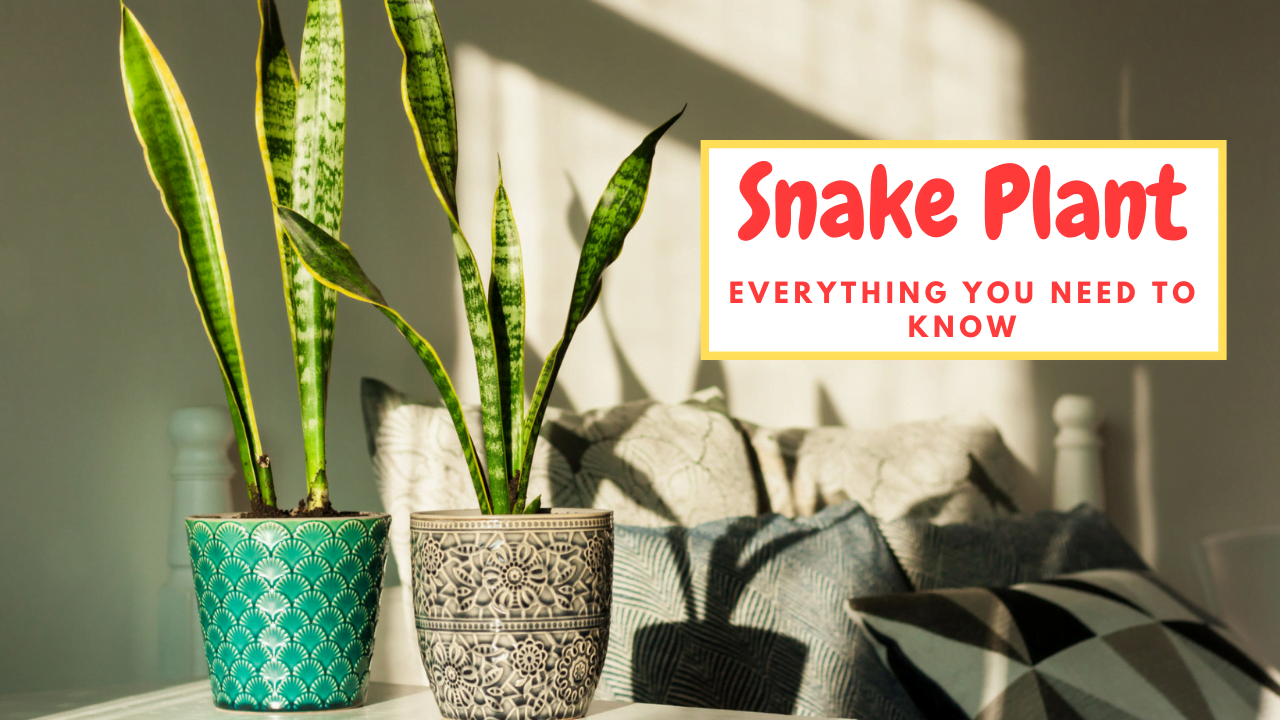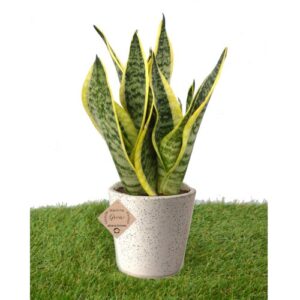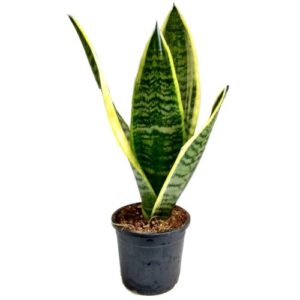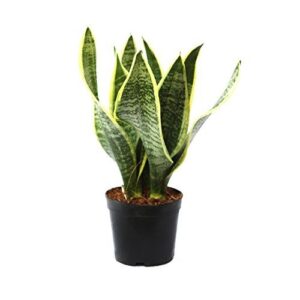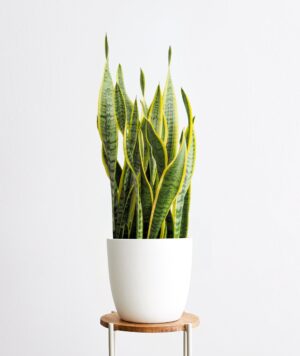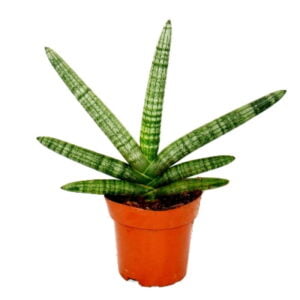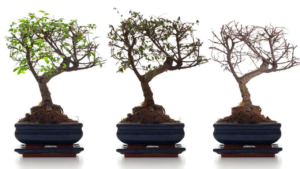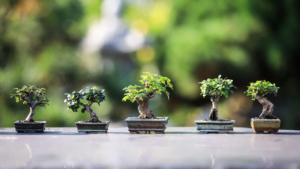Do you know that the snake plant does not have a stem?
They have just tough, thick, and upright leaves.
Besides, if there were a prize for the most tolerant plant, Snake Plant would certainly be it!
Many houseplants are grown for decoration and to maintain Feng Shui Practice; snake plants belong to this category of plants. As,there are no branches on the snake plant; it makes an ideal floor plant for small spaces. Plus, it has health benefits.
Moreover, there are dwarf varieties that form small rosettes of leaves. The most common is the one with green and silver-grey streaks. Another variegated Sansevieria has cream or gold-coloured edges.
Fun Fact: The snake plant was once classified as Sansevieria, but botanists have reclassified it as Dracaena. Although it’s scientifically known as Dracaena trifasciata, most plant parents still call it Sansevieria.
They are also known as mother-in-law’s tongues.
What is a Snake Plant?
A snake plant belongs to Asia and Africa. You can recognize them by their evergreen sword-shaped leaves that grow upright.
Due to their eye-pleasing appearance, they are mostly used as home decor. Moreover, they are easy to care for and have fewer watering needs to survive.
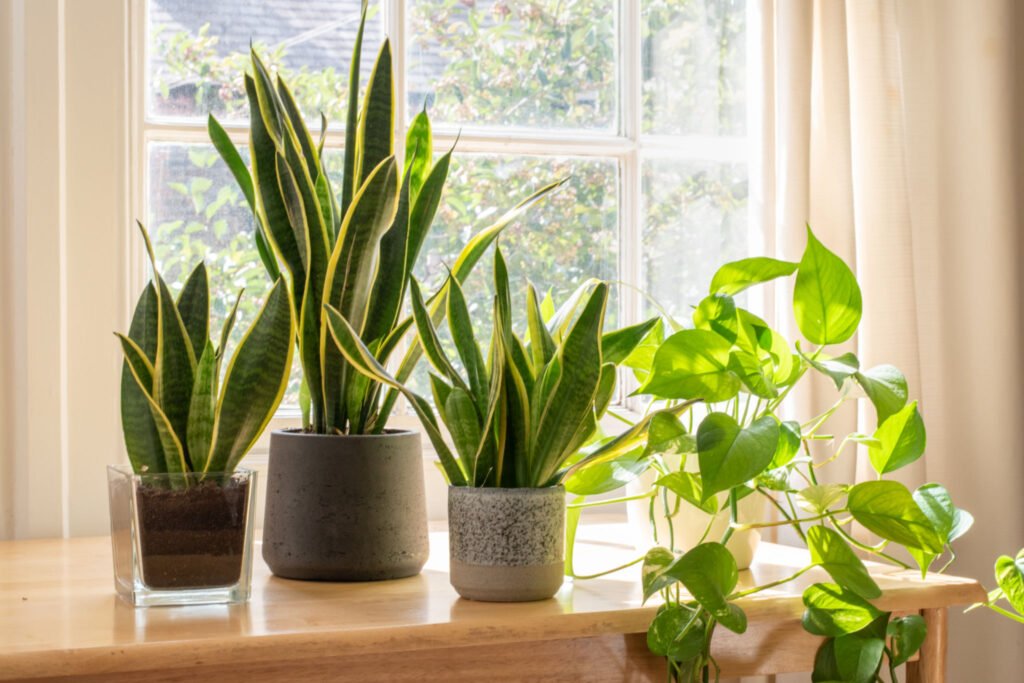
Interesting facts about Snake Plants
| Scientific name | Dracaena trifasciata (Sansevieria trifasciata) |
| Common name | Snake plant, viper’s bowstring hemp, St. George’s sword |
| Family | Asparagaceae |
| Native | West Africa (Tropical) |
| Plant type | Evergreen |
| Plant size | 6-8 feet tall |
| Sunlight | Shade to partial sun |
| Temperature | 70-90 ℉ |
| Soil type | Sandy, well-drained |
| Soil pH | Slightly acidic to slightly alkaline |
| Water | Water when the soil gets slightly dry |
| Fertilizer | Cactus fertilizer or balanced liquid fertilizer |
| Flowering time | Spring (blooms rarely) |
| Flower color | White |
| Pruning | During spring, prune the leaves at the soil line or cut off damaged or mature leaves to encourage new growth. |
| Repotting | Rarely needs repotting. Spring is the best time to re-pot. |
| Toxicity | Toxic to Cats and dogs |
Buy Snake Plants Online
Types of snake plants
There are 70 types of snake plants. Whether you already have a snake plant or are considering buying one, you have plenty of snake plants. Here are the most popular snake plants.
1. Sansevieria trifasciata
This is the most common type of snake plant and has a variety. Some plants have deep green leaves, while other varieties may have curly leaves.
A mature tree is about 3 feet tall and 2.5 inches wide. They are native to West Africa and popular for indoor decor.
Moreover, this type of snake plant is easy to care for and a great choice for beginners.
The plant prefers moderate bright light, but it can survive low light. In soil, it thrives well in well-draining soil as too much moisture causes root rot.
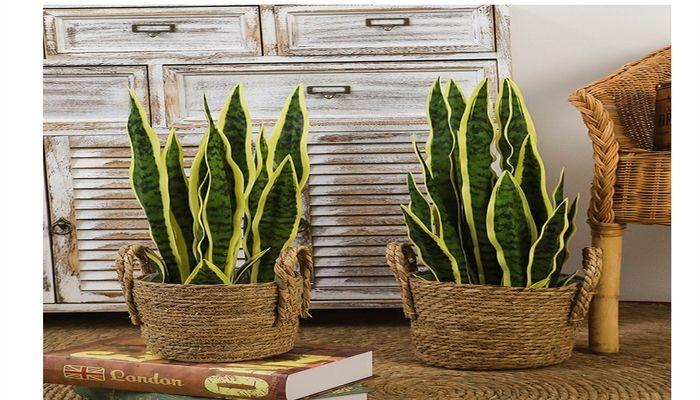
2. Sansevieria gracilis
The unique feature of this snake plant type is that its leaves stay under (18 inches) in height.
Its green and white banded leaves are long and pointed. Additionally, the plant typically blooms clusters of greenish-white flowers in late fall.
Bright light or partial sun is ideal for this plant. Also, this plant can be grown in full shade or low-light conditions, but the colours will not be vibrant as they would be in bright sunlight.
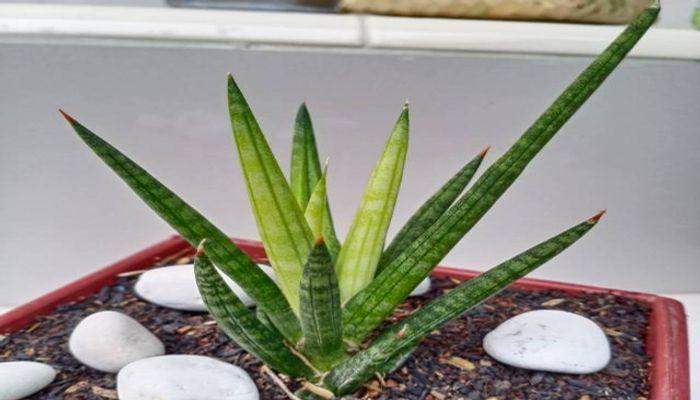
3. Sansevieria Canaliculate
The leaves of Sansevieria canaliculate are cylindrical, 3 feet long, and an inch in diameter. Its leaves grow either singularly or two at a time.
The plant is native to Madagascar and usually blooms in spring. Also, its flowers are tubular and greenish-white.
This plant likes bright filtered light and well-draining soil. To keep the plant in shape, water it frequently.
Remember that it is not a frost-tolerant plant, so it needs to be protected during temperatures below 50 ℉.
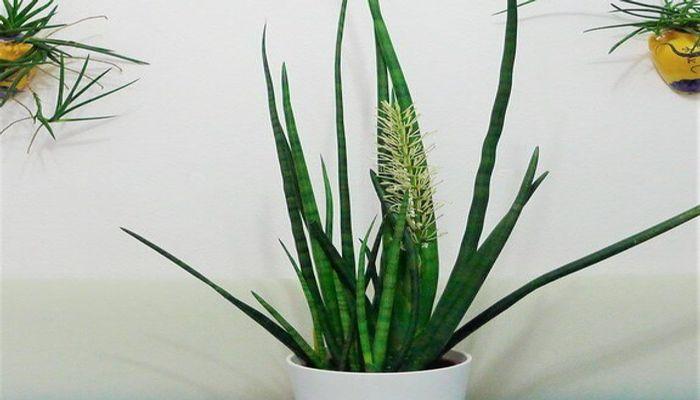
4. Sansevieria Patens
The large, chunky leaves of this Sansevieria are arranged in a rosette shape, native to eastern Africa. The grooved leaves can grow as long as three feet and as wide as two inches.
Their typical colour is dark green with light green bands. It blooms with clusters of white or greyish-white flowers.
Similar to other varieties of sansevieria, it grows well in moderately bright light. The bright light brings out the plant’s natural colours; it can also tolerate most light levels.
The plant does not need frequent watering, but it should be deeply watered. Also, it is not a frost-hardy plant so bring it inside during frigid weather.
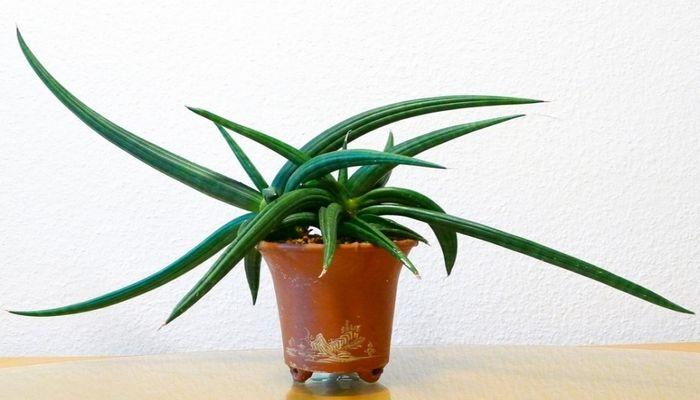
5. Sansevieria trifasciata ‘Laurentii’
Laurentii has deep green leaves with golden edges. A mature plant can reach up to 4 feet tall.
Its sword-shaped leaves grow vertically in a tight clump. Moreover, it rarely blooms, but it produces greenish-white leaves when it does.
When placed under bright light, it produces more vibrant coloured leaves. The full sun may burn the leaves of the plant.
The plant does well with infrequent water, especially in winter. To prevent root rot, use good quality, well-draining soil.
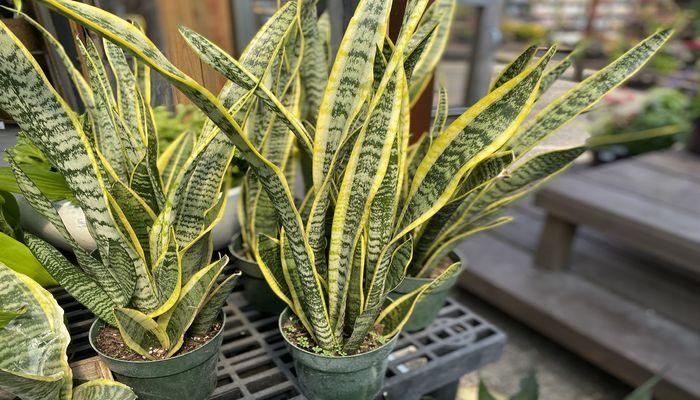
6. Sansevieria cylindrical
This cylindrical type of snake plant is native to Angola, and it is also called the “African spear.”
It is larger than other sansevieria; it can reach up to 6 feet tall.
Usually, its leaves are braided while the plant is young. It helps to control growth and creates an attractive arrangement.
Also, the plant is an ideal choice to use for landscaping.
Well-draining soil is essential for this plant, and infrequent watering is needed. In addition, this plant is mildly toxic, so be careful while planting in a location frequented by children or animals.
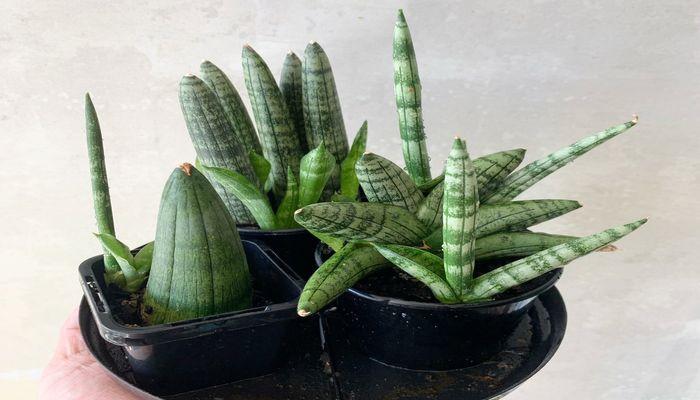
7. Sansevieria fischeri
It is one of the smaller varieties of sansevieria, less than 16 inches in height.
The plant is an ideal plant for container gardening and grows well outdoors. During summer, the plant blooms a cluster of tubular white flowers.
Sansevieria fischeri grows well in plenty of sunlight and adequate drainage. Also, it is not a frost-tolerant plant, so to protect the plant, bring it inside if the temperature dips below freezing.
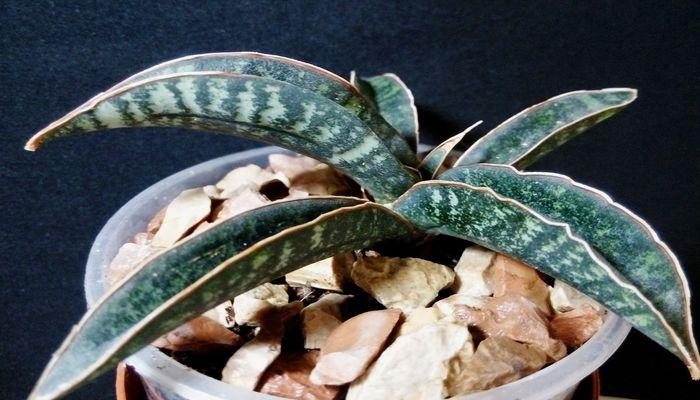
8. Sansevieria masoniana
This native plant of central Africa is also called Whale’s Fin or Shark’s fin. It has broad, mottled green leaves of 4 feet in length.
You can easily identify this plant by its purple-banded sheath; this is often below the soil line.
This Sansevieria prefers bright light; the plant does not bloom if it does not receive enough sun.
Watering is only needed when the soil is dry. Do not leave the plant in standing water. Also, the plant needs protection in cold weather because it does not tolerate freezing temperatures.
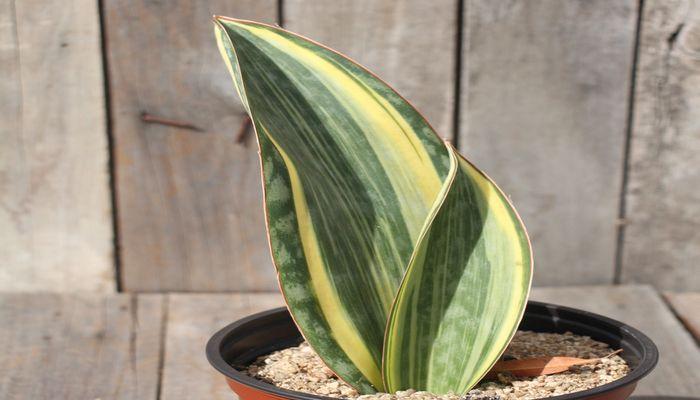
How to propagate Snake plants
The best time to propagate snake plants is in summer and spring. Snake plants can be divided easily during repotting if the plant is at least four inches tall.
You may see new shoots emerge from the soil and can pot them independently. Also, you can propagate snake plants via cuttings. Follow this method to propagate the snake plants.
Propagate by root division
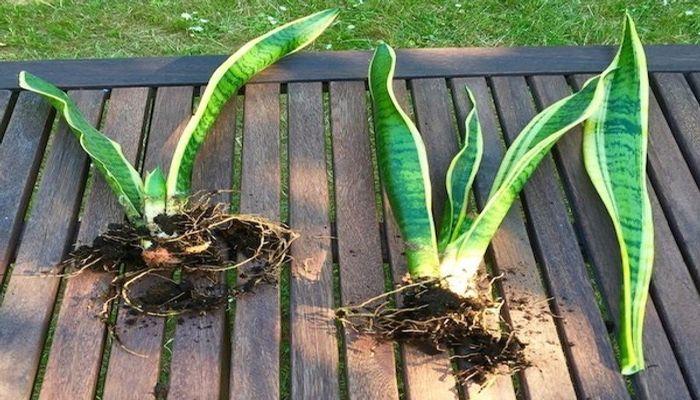
Step 1: First, get a sharp knife, a clean pot, and potting soil (cactus potting soil).
Step 2: Now, pull the root ball out of the old pot and place it on a flat surface.
Step 3: Gently brush and remove the soil from the root structure or rhizome using your hand.
Step 4: Next, take the knife and divide the plant into sections; the roots of each section should remain intact. Do not worry; cutting the plant will not kill it.
Step 5: Place the new snake plant section into the clean pot with potting soil.
Step 6: Water the plant and place it in a sunny location.
Propagate new offshoots
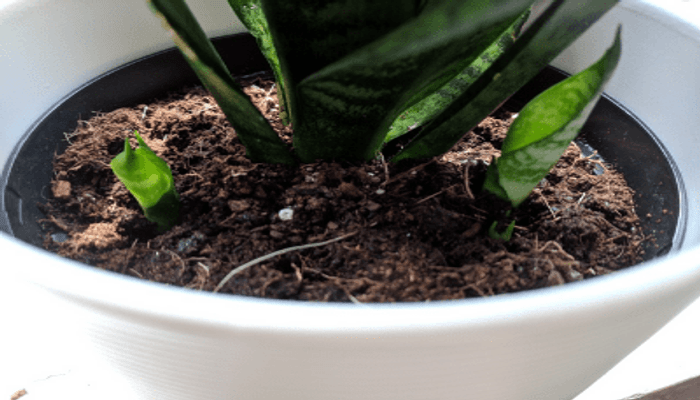
Step 1: You can plant them separately when the plant develops new pups or baby offshoots.
Step 2: For root division, gather a knife, clean the pot, and cactus potting soil.
Step 3:
- Remove the root ball from the pot.
- Find the offshoot’s root.
- Cut off the pup and plant the cut end of the root in the cactus potting soil.
Step 4: The next step is watering the plant and placing it under indirect bright light.
Leaf-cutting propagation
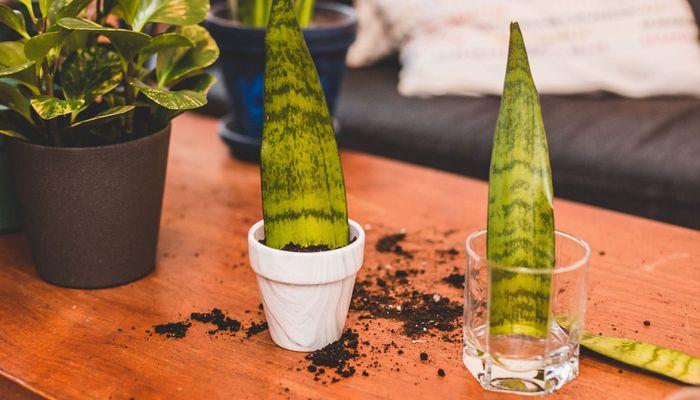
Step 1: Cut a long and healthy leaf from your snake plant. You can use sterilized scissors, a sharp knife, or pruning shears to slice off the leaf.
Step 2: Place the leaf-cutting in a clean jar of water and place the jar in a partially sunny spot and wait for root growth.
Step 3: Every two weeks, dump the old water and refill it with clean water to prevent bacterial or algae growth.
Step 4: Once you notice root growth at least an inch long, plant the root end in a pot with cactus potting mix.
Step 5: Water it and locate it under a partially sunny spot.
How to grow snake plants from seed
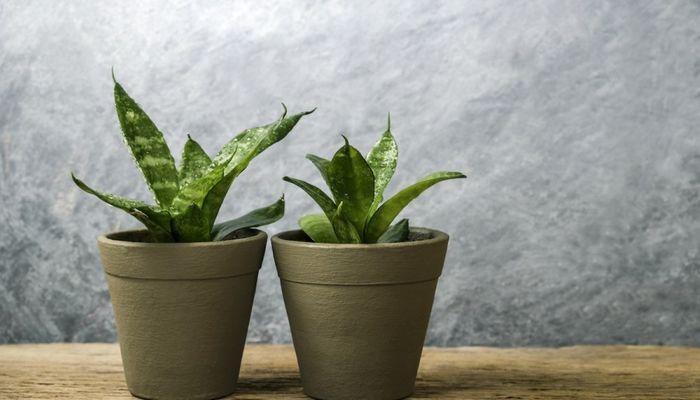
Although snake plants can be grown from seeds, above mentioned methods are easier, quicker, and more reliable.
Snake plants have a low germination rate. Moreover, it takes 3-6 weeks before you see a seedling.
Step 1: Fill a pot (three-inch) with a well-draining cactus potting mix, or you can use a seed starting mix.
Step 2: Sprinkle the seeds on the top of potting mix.
Step 3: Place the pot in a sunny and warm spot.
Step 4: Cover the pot with plastic wrap to maintain warmth and humidity. Once the seedling develops, remove the plastic covering.
Step 5: The soil should be lightly moist throughout the germination process. (Not too soggy or wet).
Step 6: Repot it when the seedling grows three to four inches tall.
Snake Plant Care
Sunlight

Snake plant-like indirect but steady light from the direct sun. Also, they can adapt to full sun conditions. Moreover, it can survive in dime-lit situations.
Temperature and Humidity
The plant likes warm and humid conditions. But the plant will suffer if it is exposed to a temperature below 50 ℉.
A temperature range between 70-90℉ is ideal.
Also, protect the plant from drafts and frost, killing the plant.
Watering
While watering, allow the soil to dry slightly. In winter, reduce watering to months or whenever the soil is dry to the touch. Too much watering can cause harm to the plant.
Soil
The plant prefers a loose and well-drained potting mix. This plant thrives well in sandier soils. So, use a potting media low in peat content as peat is suitable in many situations.
Sometimes peat can become tightly packed and causes problems like rehydrating or draining. Therefore, using good quality cactus potting soil will be the ideal choice for the snake plant.
Fertilizer
Fertilize the plant with a mild cactus fertilizer. Feed it with a balanced liquid slow-release 10-10-10 fertilizer or a 20-20-2 fertilizer diluted to half strength in the growing season.
Not to fertilize plants in winter.
Winter Care
The snake plant is a tropical plant, so it can die in temperatures below 50 ℉ or if the plant is affected by a winter frost.
During winter, bring your plant inside before the temperature drops that low. Also, keep your plant in a warm room, and protect it from cold drafts.
In winter, the plant goes dormant and stops growing. At that time, you only need to water the plant every six weeks.
Potting and Repotting
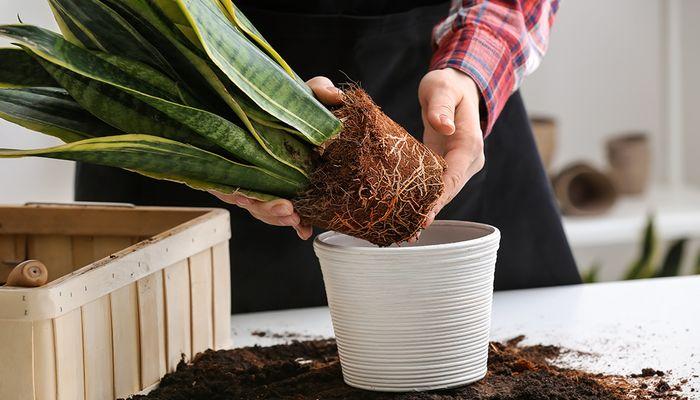
While potting, select a sturdy pot, as strong roots can easily break or crack the weak spots. The snake plant is a slow grower and rarely needs repotting. But in ample sunlight, it might grow rapidly and requires repotting.
The best time to repot the snake plant is in spring. Also, while repotting, use fresh potting soil, a cactus potting mix, or mix both.
Pruning
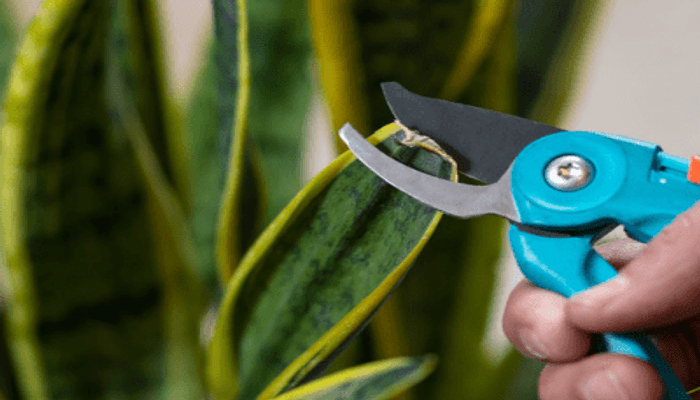
Spring is the best time to prune as it is a growing season for the plant. Use a sterile pruning shear, scissors, or sharp knife and prune the leaves at the soil line or cut off damaged or mature leaves to encourage new growth.
Moreover, you can prune the snake plant off the season, as pruning causes stress in the plant, and it is highly suitable to prune them during the growing period.
If you want to control the height of the plant, remove the tallest leaves. Also, remove any marred leaves; it will spur new leaf growth.
Common Snake Plant Pest and Disease
The first step to saving your snake plant from pests and diseases recognises its symptoms. The faster you spot the signs, the greater the chance that you will save your plant.
1. Root Rot
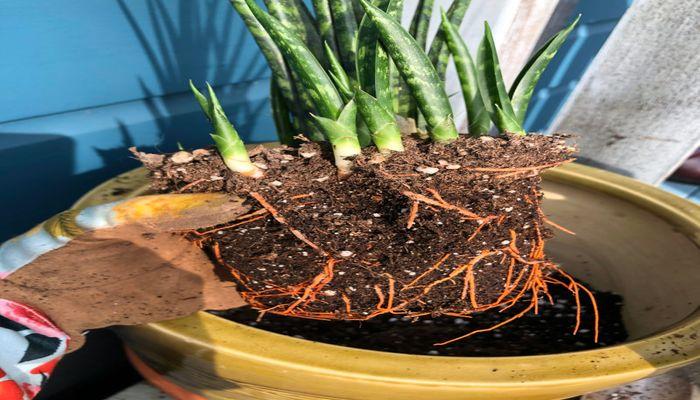
The most widespread problem with the plant is root rot. Overwatering the soil in colder months causes this problem. And when the root rot occurs, the snake plant can die due to the overgrowth of fungus and lack of oxygen.
Moreover, if the soil is soggy and contains microorganisms such as Rhizoctonia and Pythium, it begins to multiply and spread the disease throughout the roots.
When the fungi spread throughout the plant, the roots turn mushy and brown. This will prevent the roots from providing nutrients throughout the plant.
The major issue of root rot is that it often gets unnoticed as they are located beneath the soil surface. But you can smell root rot; it gives off a pungent odour around the plant base. In extreme cases, root rot can kill the plant within 8-10 days.
If your pot does not have a good drainage system, it will develop root rot quickly. If you cannot purchase a new pot immediately, take a pair of needle-nose pliers or sharp shears and make drainage holes.
Also, you can buy inexpensive online planters with good drainage holes. Remember, root rot can be difficult to get rid of if it spreads up to the plant.
Signs of root rot,
- Brown and mushy roots
- Leaves turning yellow
- Dropping of leaves
- Mushy leaves
How to get rid of root rot
The most effective way to stop root rot is to re-pot the snake plant. While repotting, you need to remove the infected soil before adding fresh soil.
Moreover, you can add the sulfur powder to new soil to prevent infection. Sulfur makes the soil more acidic and limits the number of nutrients available to harmful pathogens.
If root rot has spread throughout the plant, consider separating the plant’s leaves and keeping the healthy section.
You can re-pot healthy sections in fresh soil and use the plant cutting to grow a new plant.
How to prevent Root rot
Allow the soil to dry out completely before watering it again. Water the snake plant once every 30-60 days and less during colder months.
2. Mealybugs
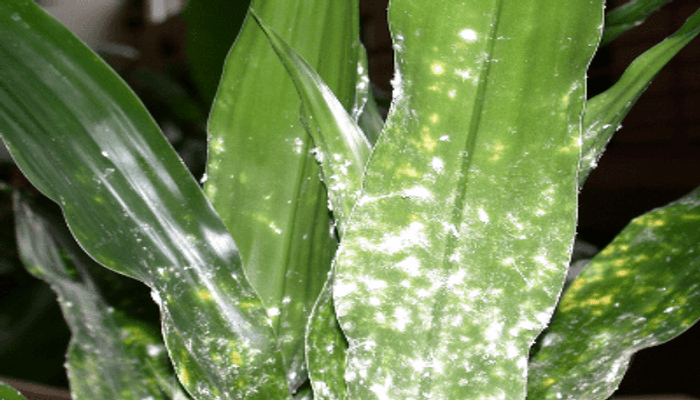
Mealybugs are common in many indoor and outdoor houseplants. They are small pink-coloured insects that are covered in a waxy white substance.
The waxy substance helps protect mealybugs from excess heat and moisture loss; this makes mealybugs a very common issue with snake plants, as they have a dry texture.
Mealybugs from colonies around the base and leaves of the snake plant. Moreover, they love succulent plants and lays microscopic larvae as soon as 5-8 days.
Signs of Mealybugs
- Deformed leaves with white spots
- Curling up of leaves
- Yellow leaves
How to get rid of mealybugs
Rub neem oil on the leaves or rinse it in warm water. You can also take a cotton swab dipped in rubbing alcohol and apply it on Leaves; a pinky waxy substance appears on the cotton balls while removing pests.
How to prevent mealybugs
To keep your snake plant away from mealybugs, inspect the plant when bringing it home from the nursery, as the pests crawl from one indoor plant to another.
Another way is to quarantine your snake plant. Also, constant monitoring is the best way to keep your snake plant mealybugs free.
3. Spider Mites
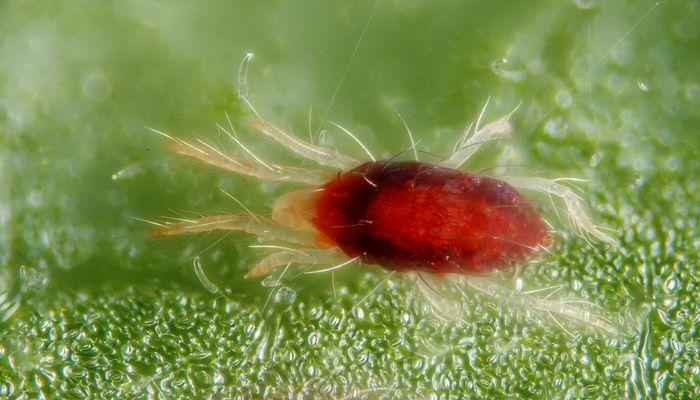
Usually, spider mites are spotted on the plant’s leaves’ underside. They feed on the water inside the leaves, making the leaves weak with holes and bite marks.
Most burdensome is the discrete nature of spider mites. Often, they go unnoticed for days or even weeks before you notice the signs of the damage.
Signs of Spider mites
- Yellow leaves
- Discoloured leaves with holes
- White webbings
How to get rid of spider mites
Mistake the snake plant with neem oil or insecticidal soap to eliminate spider mites. Also, you can use cotton swabs to rub the leaves. Make sure to cover the underside of the leaves; spider mites are known to populate that area.
Another way is to run the plant under tepid water to completely rinse spider mites from the leaves. If infestation is severe, prune your plant to keep it alive.
How to prevent spider mites
Dust the snake plant periodically; it prevents spider mites from infiltrating and laying eggs on the leaves.
4. Southern Blight
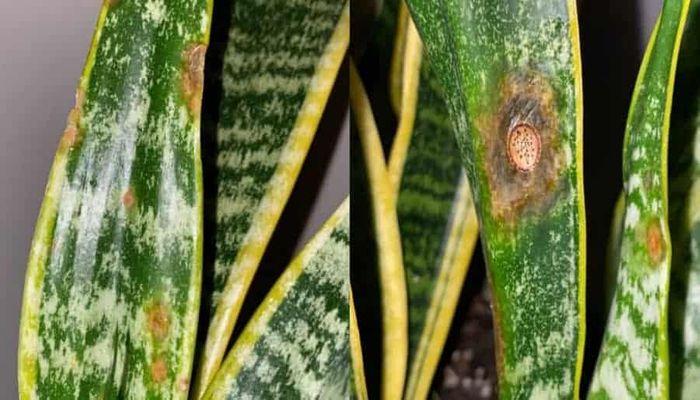
These fungi are caused by Sclerotium rolfsii. They mainly attack the plant by penetrating the stems and eating away over days. Southern blight is prolific, so you need to take steps to eliminate them quickly, as it can kill your plant within 7-10 days.
Signs of southern Blight
- White areas on the leaf’s surface
- Deep brown colour leaves
- Wilted leaves
How to get rid of Southern Blight
Use good Fungicide to get rid of Southern Blight. You can apply methyl bromide to the plant weekly to eliminate the fungus within days.
How to prevent southern blight
Avoid using pots that carry this fungus. Use a new or disinfected pot for your plant. Also, make sure that your plant has good air circulation to keep the southern blight from developing at the roots.
5. Red leaf spot
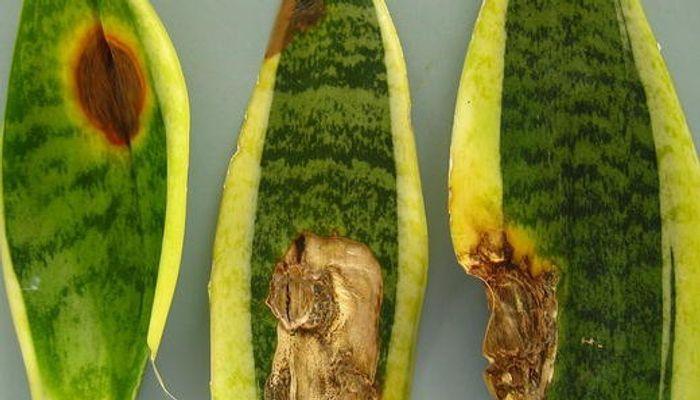
Red leaf spot disease is caused by the fungus Drechslera erythrosine. During warm months, these are commonly seen when fungus spores look for damp surfaces that are commonly stuck.
Signs of Red leaf spot
- Brownish-red dots on leaves
- Large liquid lesions on leaves.
How to get rid of red leaf spots
Cut away the infected leaves and spray the rest of the plant with copper or sulfur fungicide. The chemical treatment will prevent new spores from forming.
How to prevent red leaf spots
Keep the plant out of standing water to prevent red leaf spots. In addition, you need to keep the leaves free-standing water and ensure the plant has good airflow.
Benefits of snake plant
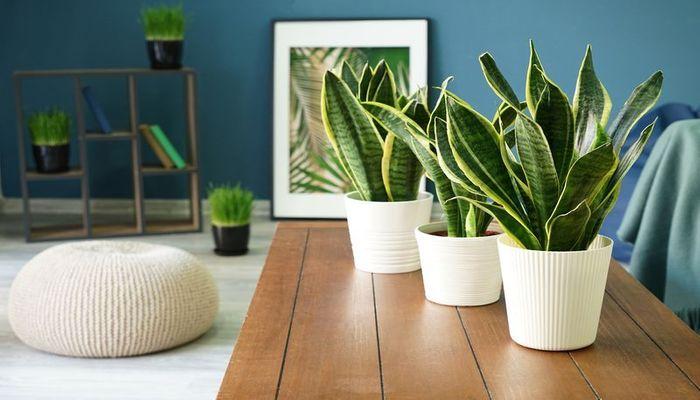
In addition to providing beauty to the place, the snake plant has a number of health benefits such as
1. An Air Purifier
Like other indoor succulent plants, the snake plant purifies the air, even at night. The unique feature of this plant is that it’s one of the few plants that convert carbon dioxide into oxygen at night.
This feature makes the snake plant an ideal plant for bedroom decor, as it helps to circulate healthy airflow.
2. Remove Toxic pollutants
The snake plant can remove toxic air pollutants. Although in a small percentage, they can absorb cancer-causing pollutants, including,
- Carbon dioxide
- Benzene
- Formaldehyde
- Xylene
- Trichloroethylene
- Toluene
With the ability to remove such harmful toxins, the snake plant acts as an effective defence against airborne allergies.
3. Mental health booster
However, 2018 research suggests that plants play a positive role in mental health, and further research is warranted.
Due to its therapeutic properties. Horticultural therapy is used in mental health treatment.
This mental health booster can be added to workplaces, schools, and medical facilities as a low-cost and low-risk way to improve environments.
4. Easy to care for
One of the reasons the snake plant is a common houseplant is because it is a low-maintenance plant and easy to care for.
According to NatureID botanist Halina Shamshur, “Sansevieria is the common houseplant for all continents.” They are very undemanding and often grown on the windowsills in houses, apartments, and different public buildings.
The snake plant tolerates both shade and direct sunlight, dry air, underwatering, and drafts. Moreover, they require frequent repotting and are hardly attacked by pests.
5. Effective against allergies
The Snake plants lessen the impact of airborne allergens like dust and dander. It releases oxygen and adds moisture to the air.
This is the biggest advantage, as poor indoor air quality can cause many health-related issues like asthma and allergies.
6. Feng shui
According to Feng shui practice, the snake plant can absorb negative energy. Also, it is believed that Sansevieria promotes learning when placed in the classroom.
In addition, the snake plant is recommended to place in a room where people tend to argue against eliminating bitterness and jealousy. They can also be placed near appliances that emit harmful radiation.
7. Relieves minor physical ailments
Snake plants have the ability to,
- Heal burns and other skin wounds
- Reduce inflammation
- Support standard blood pressure
- Strengths of the immune system
- Flush out parasites
- Relieve headaches
The sap of the plant helps heal skin wounds, and the aroma helps relieve headaches.
But be careful while using snake plant leaves, as they contain saponins and are poisonous substances. Do not eat or drink any part of the snake plant.
Common Problems with Snake Plant
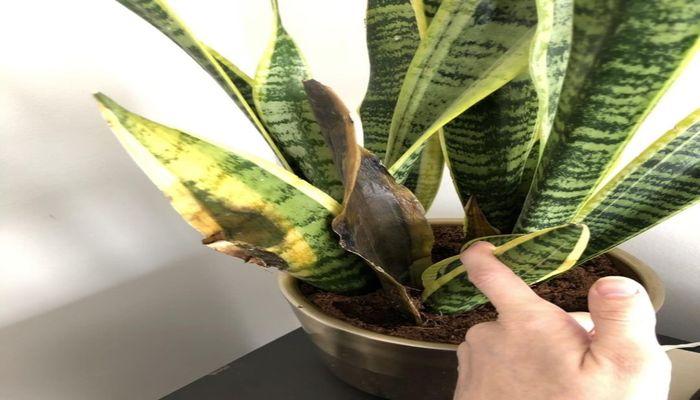
The biggest snake plant health problems come from overwatering. It causes the diseases like infections and root rot.
- Foul-smelling soil
If the soil smells like it is rotting, the plant has root rot. At that time, scoop out some soil and put it up to your nose. It smells foul.
Save your snake plant, and pull the root ball out of the pot. Start cutting any brown, mushy roots or leaves of the plant.
Now, repot the healthy part of the root rhizome in a well-draining cactus potting mix.
Unfortunately, if you can’t save the rhizomes, discard them. Propagate new plant from leaf cuttings
- Yellow or brown leaves
A healthy snake plant has green leaves with some silver or yellow streaks. If it shows yellow or brown leaves, it indicates overwatering, pests, and root rot.
You can overcome this problem by managing the plant’s watering needs appropriately.
Overwatering is the main reason to stress out the plant and causes root rot, making the plant more susceptible to pests.
- Curling leaves
The curling of leaves is caused by pests called Thrips. You can use the magnifying glass to closely check your plant’s leaves; you can spot tiny black bugs.
These pests are easy to deal with. Cut away the curled leaves and spray neem oil or vegetable soap on the plant. Eventually, new leaves will grow.
- Dropping of leaves
The leaves of the healthy snake plant grow upward and stand erect. Too much watering, insufficient light, or poor potting soil makes the leaves droop or flop over.
Also, if you don’t use a good quality draining potting mix, the soil becomes soggy and affects the foliage of the snake plant.
For this, move your snake plant to a brighter location, reduce the frequency of watering, and change the soil to one that drains better.
- Mushy, soft, and soggy leaves:
Reasons:
Plants living negligently on moist soil. The soil of your snake plant never dries up if you water it more repeatedly than it can drink. That creates a perfect habitat for bacteria and fungus. They’ll increase like crazy and eventually get into the roots and leaves. Your snake plant’s leaves will start to grow mushy areas at that moment.
Even if you moisten your snake plant carefully, your soil may still betray you sometimes. For a snake plant, some potting mixes bear too much water. Despite your best measures, they take so longer period to dry up that they generate root rot and mushy leaves.
your snake plant’s cells may begin to die from temperature shock if they fluctuate frequently in settings that are over 90 degrees or lower than 55 degrees. As a consequence, the inner parts of the leaves will be weak, rotting tissue patches.
Solution:
Let the soil dry out before drenching again. The first step in resolving the issue is to stop watering the plant until the soil has had a chance to dry out. This will provide the roots an opportunity to breathe and let any extra water deplete. Once the top few inches of soil are dry to the contact, you can water the plant again, but be certain to use a quick-draining potting mixture and avoid over-watering from now on.
Enhance drainage of the pot or container. If the soil is logging moisture and the roots are sitting in constant water, you have to enhance the drainage in the pot. You can do this by giving a layer of rock, grits, or coarse sand to the base of the pot or container, or by using a container with multiple drainage holes.
Place your plant in the new spot for an hour or two every day if you’re transplanting it to a warmer or freezing place. Then increase its exposure slowly. Keep a keen eye on areas where the temperature shifts frequently.
How to Select the Snake plant
While looking for your snake plant, choose something that will grow luscious for years to come. It is not easy as it seems to select a snake plant; you need to consider which type of snake plant is suitable for you, along with many other factors such as texture, colour, root system, etc.
Following are the factor you need to look at while choosing a snake plant,
Colour
The colour of the plant indicates its health. The discolouration is a sign of ill conditions or a more serious problem.
Select a snake plant that is bright and vibrant. Its leaves should be rich green, and the stems should look vibrant and crisp.
Make sure to watch out for the signs such as yellowing or black, or brown spots, as these are signs of a serious condition.
Texture
Snake plants should have sturdy stems and crisp, firm leaves that hold their shape over time.
Floppy-looking leaves or stems are a sign of a sick plant. Weak stems and soggy leaves may indicate root rot, which is very difficult to treat.
Root system
If you’ve purchased the plant at a garden centre rather than an online store, removing the pot and inspecting its roots is advisable.
A well-established root system occurs when the soil and roots remain tightly packed and keep the shape of the pot even after the plant has been removed from the pot. If the soil crumbles away and you are left with dirt in your hand, then it has not established a root system.
Pot
Don’t make your final decision based on the pot that a snake plant is in; its pot can be changed at any time. The pot must have plenty of drainage holes to escape the excess water. Terra cotta pots are perfect for snake plants.
Display ideas

- Tall snake plants with linear arrangements make a strong vertical accent. As they are relocation tolerant, they are great plants to move anywhere where you feel a striking architectural element.
- You can also use tall snake plants to create a privacy screen in front of the bedroom. To create a natural room divider, set multiple pots in a row on a table or shelf.
- The best way to pack as many plants as possible into a narrow space is to fill a thin vase, including the standard snake plants and different types, such as the shark’s fin.
- S. trifasciata is an ideal tabletop plant as they are compact and slow-growing plant that works well in dish gardens or terrariums.
- Snake plants can be placed near an aquarium to mimic seaweed. The branches of the tall, twisty plants resemble kelp gardens, their leaves swinging in the current.
- Place tall sansevierias in decorative plant stands to breathe life into drab corners. Such spots are great places for these shade-tolerant plants.
Does snake plant produce flower?
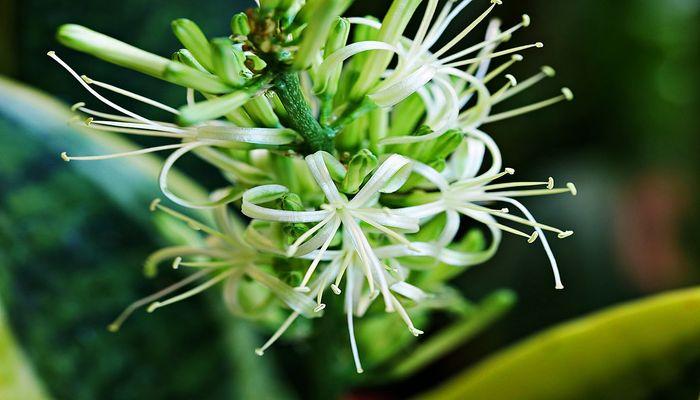
The snake plant produces creamy-white, tubular flowers. They look similar to lilies. The plants bloom annually under ideal growing conditions.
However, when this plant is grown indoors, it rarely produces flowers. The change of season, especially spring, kickstarts the plant out of dormancy and spurs plant growth.
Like other dracaena species, the flowers are fragrant. Moreover, the flower blooms at night. Also, there is no need to deadhead flowers because they will drop independently.
Is snake plant toxic?

These plants are relatively safe, but they are mildly toxic if consumed.
Because their leaves contain a poison that causes swelling and numbness on the tongue, only if eaten in large doses.
So, it is wise to keep snake plants away from children and animals prone to nibbling.
FAQs
1. Where to place the snake plants in your house?
A highly suitable place for snake plants is where it gets bright and indirect light. You can also place them in low light; their growth does not get much hampered.
2. How often should I water my snake plant?
According to experts, you should water the snake plant once every ten days. Remember not to overwater the plant; it can damage its root.
3. Is it recommended to use chemicals for controlling disease?
No, it is not right to use chemicals. To control the plant’s disease, try to mend the watering schedule and record changes.
4. What is the average lifespan of the snake plant?
The average lifespan of the snake plant is 5-10 years. But some snake plants can live for 20-25 years with pivotal care.
5. Why it is called the Snake plant?
It is called a snake plant because of its shape and sharp margins of the leaves that resemble snakes.
6. When Should I repot my snake plant?
Late winter and early spring are suitable times for repotting.
7. Why is snake plant good for sleep?
The snake plant emits oxygen at night which helps you to sleep better.
8. Is snake plant lucky or unlucky?
Sometimes the Mother-in-Law’s Tongue or snake plant is believed to be a bad Feng Shui plant. But, this is not correct, because the Snake Plant can carry very beneficial feng shui vitality when placed in exact spots of a home or office; this plant has powerful protective energies. Southeastern, Southern, and Eastern corners of a space are the best feng shui spots to set your snake plant.
9. Do Snake Plants Need Deep Pots?
Ans. An excessively deep pot can discourage drainage and allow water to sit for a longer period. While still being contained in the pot, the plant requires space to grow. The snake plant’s rhizomes or roots extend outward instead of descending toward the base of the pot. Your plant’s roots might come in touch with the pot’s ground. In a shallow pot that fits snugly, your plant will grow well.
Conclusion
Sansevieria is an evergreen perennial that grows from 8 inches to 12 feet high. Their attractive sword-like leaves are 2 feet long. Moreover, their foliage is stiff, broad, and upright in dark green colour.
Some varieties may have white and yellow striping. In addition, they are popular because of their ability to survive in unsuitable growing conditions.
Also, they have qualities that help to purify the air. They are ideal for bedroom companions as they produce oxygen at night.
Moreover, it is the best choice for beginners because it is difficult to kill. It looks great in a container and on the floor or table displays. The plant enjoys warm weather but struggles in cold conditions, so extra care is needed in winter.
I hope the article covers your every question related to the snake plant.
So, let us know your experience with your snake plants in the comment section, and we will be glad to know.
Related Articles
- Why is My Bonsai Dropping Leaves?
- Why are My Bonsai Leaves Turning Black?
- What is Bonsai? Complete Guide With Its Meaning, History, and Designs
- Turn Your Apartment into a Green Haven with 15 Amazing Plants
- Transform Your Home with These 30+ Stunning Indoor Hanging Plants
- Top 4 Real Bonsai Trees to Replace Your Artificial Bonsai Collection

